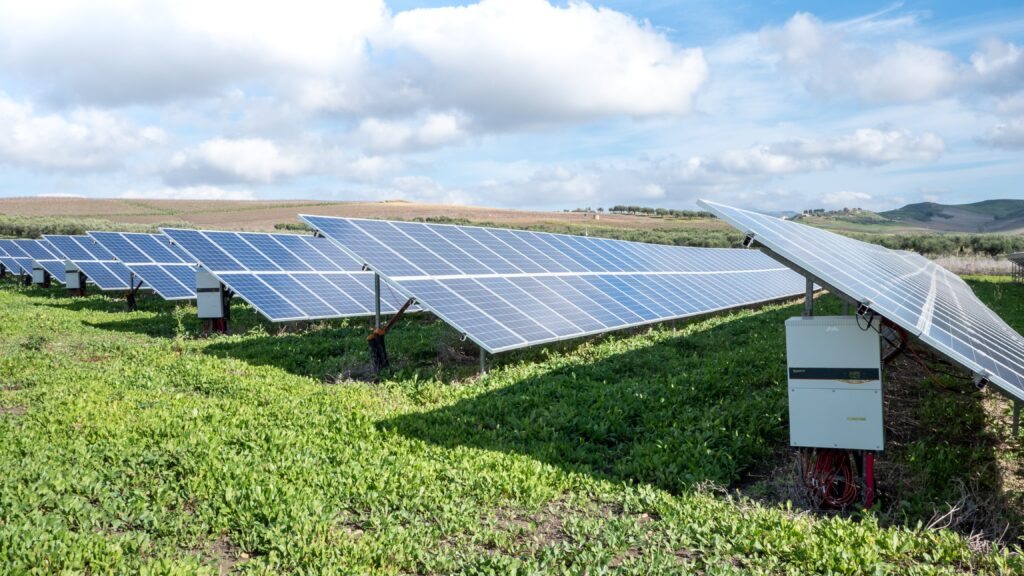Have you ever wondered just how much battery power it takes to truly go off the grid? In our fast-paced world, where technology is constantly evolving, it seems that we rely on our electronic devices more than ever before. From smartphones and tablets to laptops and smartwatches, our lives are intertwined with batteries. But how much battery power do you really need to disconnect from the grid and rely solely on your own sustainable energy sources? Let’s explore the answer to this question and discover the fascinating world of off-grid living.
Understanding the Concept of Off-Grid Living
Definition of off-grid living
Off-grid living refers to a lifestyle in which individuals or communities are completely self-sufficient and independent from the traditional electrical grid. It involves generating and storing their own power through renewable energy sources, such as solar panels or wind turbines, and using energy-efficient appliances. Off-grid living also entails utilizing alternative systems for water supply, waste management, and other essential resources. This lifestyle aims to reduce dependence on fossil fuels, minimize environmental impact, and promote sustainability.
Benefits of living off-grid
There are several advantages to embracing off-grid living. First and foremost, you gain energy independence, which means you are no longer at the mercy of power outages or fluctuations in utility prices. This can provide peace of mind and stability, especially in rural or remote areas where power grids may be unreliable or nonexistent. Additionally, living off the grid allows you to significantly reduce or eliminate your carbon footprint, contributing to environmental conservation. It also offers the opportunity to live a simpler lifestyle, reconnecting with nature and fostering a greater sense of self-sufficiency.
Challenges of living off-grid
While off-grid living comes with numerous benefits, it is important to be aware of the challenges that may arise. One significant challenge is the upfront cost of setting up an off-grid system, which can be substantial. The initial investment required for renewable energy sources, energy storage systems, and energy management systems may be a barrier for some individuals. Additionally, off-grid living requires careful planning and maintenance. It is crucial to monitor energy usage, balance power generation and storage, and ensure system reliability. Living off-grid also necessitates adapting to a different lifestyle, which may involve adjusting energy consumption habits and being mindful of resource limitations.
Building Blocks of an Off-Grid System
Renewable energy sources
Renewable energy sources are the foundation of an off-grid system. Solar panels, wind turbines, and hydropower systems are among the most common methods for generating electricity in off-grid living. Solar panels convert sunlight into electricity through photovoltaic cells, while wind turbines harness the power of wind to generate electrical energy. Hydropower systems utilize the force of flowing or falling water to produce electricity. By harnessing these renewable sources, off-grid systems can provide a continuous and sustainable power supply.
Energy storage systems
energy storage systems play a crucial role in off-grid living, as they allow for the storage and utilization of energy even when the primary energy source is not actively generating power. Batteries are the most common form of energy storage for off-grid systems. They store excess energy generated by renewable sources during periods of high production and supply it during periods of low production or high demand. Energy storage systems smooth out the intermittency of renewable energy sources and ensure a consistent power supply.
Energy management systems
Energy management systems are responsible for optimizing the use of energy within an off-grid system. These systems monitor and control energy flow, ensuring efficient utilization of stored energy. They may include inverters, charge controllers, and other devices that regulate the charging and discharging of batteries, convert DC power to AC power, and manage the overall energy flow within the system. Energy management systems help maximize the lifespan of batteries, optimize power usage, and ensure the stability and reliability of the off-grid system.

Types of Batteries for Off-Grid Living
Lead-acid batteries
Lead-acid batteries have been widely used in off-grid systems for many years. They are relatively inexpensive and available in various sizes and capacities. These batteries are capable of deep cycling, meaning they can discharge a significant portion of their capacity without being damaged. However, lead-acid batteries require regular maintenance, including watering and equalizing, and they have limited lifespan compared to other battery technologies.
Lithium-ion batteries
Lithium-ion batteries have gained popularity in recent years due to their higher energy density, longer lifespan, and lower maintenance requirements. They offer a higher depth of discharge, enabling more usable capacity. Lithium-ion batteries are also lightweight and compact, making them suitable for off-grid applications where space is limited. However, they tend to be more expensive upfront, although their longer lifespan can offset the initial cost over time.
Nickel-based batteries
Nickel-based batteries, such as nickel-metal hydride (NiMH) and nickel-cadmium (NiCd) batteries, offer good cycling performance and high tolerance to extreme temperatures. They are known for their reliability and durability, making them suitable for off-grid living. However, these batteries have a lower energy density compared to lead-acid or lithium-ion batteries, resulting in a larger physical footprint for the same capacity.
Saltwater batteries
Saltwater batteries, also known as aqueous batteries, are an emerging technology in the field of off-grid living. They utilize saltwater as the electrolyte, making them non-toxic and environmentally friendly. Saltwater batteries have a high energy density and can be deeply cycled without significant degradation. They also offer a long lifespan and require minimal maintenance. While still relatively new to the market, saltwater batteries show promise for their eco-friendliness and performance.
Factors Affecting the Amount of Battery Needed to Go Off-Grid
Energy consumption patterns
One of the key factors influencing the amount of battery capacity needed for off-grid living is the energy consumption patterns of the individual or household. The more energy-intensive the lifestyle, the larger the battery bank required. Factors such as the number of appliances, their power ratings, and the duration of use all contribute to determining the energy demand. By assessing energy consumption patterns, it is possible to estimate the amount of battery capacity needed to meet the daily energy requirements.
Climate and geographical location
Climate and geographical location greatly influence the energy generation potential of renewable sources. Areas with ample sunlight or consistent wind patterns will require less battery capacity as renewable energy sources can generate more power. In contrast, regions with limited renewable energy potential may need larger battery banks to compensate for lower energy generation. Additionally, extreme climates with high or low temperatures can affect battery performance and longevity, requiring additional battery capacity.
Availability of renewable energy sources
The availability and reliability of renewable energy sources also impact the amount of battery capacity required. In areas where renewable energy sources are abundant and consistently available, such as solar-rich regions, smaller battery banks may be sufficient to complement the power generation. Conversely, locations with intermittent or unreliable renewable sources may necessitate larger battery capacities to provide consistent power supply during periods of low energy generation.
Types and efficiency of household appliances
The types and efficiency of household appliances used in off-grid living have a significant impact on the amount of battery capacity needed. Energy-efficient appliances require less power and can reduce the overall energy demand, thereby decreasing the required battery capacity. Choosing appliances with high energy efficiency ratings and minimizing the use of power-hungry devices can help optimize energy consumption and reduce the size of the battery bank.

Calculating Your Power and Energy Needs
Estimating power usage
To calculate your power needs for off-grid living, start by assessing the energy consumption of each appliance or device. Identify the power rating (wattage) and the daily usage hours. Multiply the power rating by the daily usage hours for each appliance and add up the results to estimate your total daily energy usage. It is important to consider both continuous load, which refers to devices that run all the time, and peak load, which accounts for devices with intermittent or high power usage.
Sizing your off-grid battery bank
Once you have estimated your daily energy usage, you can size your off-grid battery bank accordingly. Start by determining the required capacity in ampere-hours (Ah) or kilowatt-hours (kWh). This can be done by multiplying the daily energy usage by the desired number of days of autonomy, which represents the number of days the battery bank should ideally sustain your energy needs without recharging. Select a battery bank with a capacity that meets or exceeds the calculated requirement to ensure a reliable power supply.
Understanding peak load and continuous load
Peak load and continuous load are essential considerations when sizing your off-grid battery bank. Peak load accounts for devices that demand a high amount of power for short durations, such as refrigerators or air conditioners. Continuous load refers to devices that require a constant power supply, such as lighting or electronics. By understanding the power requirements of both peak and continuous loads, you can ensure that your battery bank can handle the maximum power demands without compromising performance or lifespan.
Maintenance and Lifespan of Off-Grid Batteries
Proper storage and usage of batteries
Proper storage and usage practices are vital for maintaining the lifespan and optimal performance of off-grid batteries. It is essential to store batteries in a cool and dry location, away from direct sunlight or extreme temperatures. Regularly inspect batteries for signs of damage or leakage and ensure they are securely connected and protected from moisture. Follow the manufacturer’s guidelines for charging, discharging, and equalizing batteries to avoid overcharging or deep discharging, which can negatively impact battery lifespan.
How to prolong battery lifespans
There are several measures you can take to prolong the lifespan of off-grid batteries. Implementing a regular maintenance schedule is crucial, which includes activities such as checking battery voltage, cleaning terminals, and replacing damaged components. Avoid overcharging or undercharging batteries, as both can lead to premature degradation. Utilize charge controllers and management systems to regulate the charging and discharging processes. It is also advisable to avoid deep discharging batteries excessively, as this can reduce their overall lifespan.
When to replace off-grid batteries
Despite proper maintenance, off-grid batteries will eventually reach the end of their lifespan. The lifespan of a battery depends on numerous factors, including the battery chemistry, usage patterns, and maintenance practices. As a general guideline, lead-acid batteries typically last between 4 to 8 years, lithium-ion batteries can last between 10 to 15 years, and nickel-based batteries have a lifespan of approximately 5 to 7 years. It is important to monitor battery capacity and performance over time and proactively replace batteries when they no longer meet the energy storage requirements.

Cost Implications of Going Off-Grid
Upfront costs of an off-grid system
Embracing off-grid living does involve upfront costs associated with setting up the necessary infrastructure. These costs vary depending on the size of the system, the chosen renewable energy sources, energy storage capacity, and energy management systems. Expenses include the purchase and installation of solar panels or wind turbines, batteries, inverters, charge controllers, and other related components. It is important to consider the initial investment required, including professional installation fees if necessary, when planning to go off-grid.
Maintenance costs
While off-grid living can provide long-term savings, it is essential to consider ongoing maintenance costs. Regular maintenance of renewable energy systems, batteries, and energy management systems is crucial for optimal performance and longevity. Factors such as battery replacements, system upgrades, and routine inspections should be taken into account. However, it is important to note that the maintenance costs of off-grid systems are typically lower compared to the ongoing utility bills associated with grid-connected living.
Savings from living off-grid
Living off-grid can result in significant savings over time. By generating and storing your own power, you eliminate or greatly reduce the need to pay utility bills. These savings can accumulate and offset the upfront costs of setting up an off-grid system. Additionally, off-grid living encourages energy efficiency, as individuals become more conscious of their energy consumption. By utilizing energy-efficient appliances, reducing waste, and adopting sustainable practices, you can further reduce your overall energy usage and save money in the long run.
Safety Measures for Using Off-Grid Batteries
Potential hazards
As with any electrical system, there are potential hazards associated with using off-grid batteries. These hazards include electric shock, fire, and chemical exposure. It is important to be aware of the risks and take precautionary measures to ensure your safety. Mishandling batteries, improper connection, or overloading can result in short circuits or overheating, leading to fire hazards. Chemical leakage from damaged batteries can also be harmful if not handled properly.
Protection techniques
To ensure safety while using off-grid batteries, it is crucial to follow best practices and implement proper protection techniques. Start by using high-quality batteries and components that adhere to safety standards. Install appropriate fuses and surge protectors to safeguard against electrical surges or short circuits. Protect batteries from extreme temperatures and avoid overcharging or discharging beyond recommended limits. Regularly inspect batteries and associated components for signs of damage or wear, and immediately address any concerns to prevent potential hazards.
Best practices for safe battery usage
Adhering to best practices for safe battery usage is essential when living off-grid. This includes reading and following the manufacturer’s instructions for installation, maintenance, and disposal. Never mix battery chemistries or use damaged or expired batteries. Use insulated tools and wear personal protective equipment when handling batteries. Educate yourself and others on safe battery handling and emergency procedures. By implementing these best practices, you can ensure the safe and responsible use of off-grid batteries.
Case Studies of People Living Off-Grid
Individual/homeowner experiences
Numerous individuals and homeowners around the world have embraced off-grid living successfully. These off-grid enthusiasts have documented their experiences and shared valuable insights into the challenges and benefits of this lifestyle. Many have reported increased self-sufficiency, reduced carbon footprint, and enhanced connection with nature. Testimonials often highlight the joy of generating their own power, the freedom from utility bills, and the increased awareness of energy consumption. Learning from these firsthand experiences can provide inspiration and practical knowledge for those considering or already living off-grid.
Community-level off-grid living
In addition to individual experiences, there are also examples of community-level off-grid living. Some communities, both rural and urban, have adopted off-grid systems to promote sustainability and self-sufficiency at a larger scale. These communities often share resources, such as renewable energy generation and storage infrastructure, water management systems, and waste disposal methods. By pooling their skills, knowledge, and resources, these communities create sustainable off-grid ecosystems that foster collaboration, resilience, and a sense of belonging.
Country-wide off-grid initiatives
Several countries have implemented country-wide off-grid initiatives to provide electricity to remote or underserved areas. These initiatives utilize renewable energy sources and off-grid systems to bring power to communities that are not connected to the national grid. For example, countries like India, Kenya, and Bangladesh have implemented ambitious programs that leverage solar power to bring electricity to millions of households. These initiatives have a transformative impact on people’s lives, promoting economic development, education, and healthcare in previously disadvantaged areas.
Future Trends in Off-Grid Living
Technological advancements in batteries
The future of off-grid living holds promising advancements in battery technology. Research and development efforts are focused on improving the energy density, lifespan, and affordability of batteries. New developments, such as solid-state batteries or advanced lithium-ion chemistries, aim to address the limitations of current battery technologies and pave the way for more efficient and sustainable energy storage solutions. These advancements have the potential to make off-grid living even more accessible and attractive in the years to come.
Policy implications
Off-grid living is not solely driven by individual choices; it is also influenced by policy and regulations. Governments across the globe are recognizing the importance of renewable energy and the potential benefits of off-grid living. Policies that incentivize the adoption of renewable energy sources, provide financial support, and streamline the permitting process for off-grid systems can encourage more people to embrace sustainability and self-sufficiency. As policies evolve and become more favorable, the growth and acceptance of off-grid living are likely to accelerate.
Environmental impact of off-grid living
Off-grid living inherently contributes to a reduced environmental impact. By utilizing renewable energy sources and energy-efficient practices, individuals and communities can significantly decrease their carbon footprint. Off-grid systems eliminate or greatly reduce reliance on fossil fuel-based power, which reduces greenhouse gas emissions and air pollution. Additionally, off-grid living often promotes sustainable practices such as rainwater harvesting, composting, and organic gardening, further minimizing environmental impact. As more people adopt off-grid lifestyles, the cumulative effect can have a positive influence on environmental conservation.




